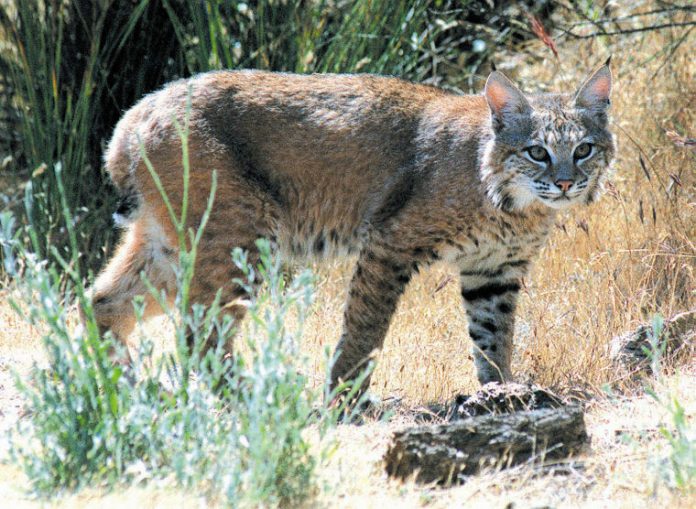This has been a difficult summer for wildlife and the folks who care for them. Northern California is once again in the midst of a record-setting drought. The Santa Clara Valley Water District reports that Santa Clara County’s reservoirs are at less than three-fourths of their average August capacity. As early as April, the National Oceanic and Atmospheric Administration reported that our temperatures in the coming months were expected to be above normal and our rainfall considerably below normal. That prediction has been accurate; despite some cool days this summer, we are in the midst of one of the driest, warmest seasons on record.
WERC and other wildlife rehabilitators have cared for many animals this summer, particularly hawks and owls, which have been brought in extremely dehydrated and emaciated. Many have not survived, despite the best care possible. Without water, plants cannot grow and feed the rodent population that raptors need to survive. It is an excellent example of the food chain concept that elementary students study: raptors need rodents, rodents need plants, plants need water: no water, no plants, no rodents, no raptors.
Even small songbirds have been affected. Without water, the plants that produce the seeds they eat cannot produce them in the usual quantity. Nectar eating birds, such as hummingbirds, are similarly affected by the reduced number of flowers available. A reduction in plant growth means fewer hiding places for ground nesting birds and animals like squirrels. Also, in very dry conditions wild animals need to travel further in search of food, thus subjecting them to increased predation.
Wildlife rehabilitators anticipate that as the summer progresses and the drought continues, animals such as deer will move further down from the hills and possibly into inhabited areas in search of food and water. Inevitably, the deer’s predators, mountain lions, will follow – also looking for food and water, and setting up possible wildlife/human interactions. If a mountain lion is spotted in your neighborhood, call the California Department of Fish and Wildlife. New regulations require CDFW to attempt to tranquilize the animal and relocate it rather than automatically killing it.
Bobcats may also be seen closer to habitation; they are not generally dangerous to humans but if one is seen be sure to bring in any pets or children who might be playing outside.
In addition, hot and dry conditions contribute to the population of West Nile Virus carrying mosquitoes.
A report by the Santa Clara County Vector Control District makes the direct connection between hot and dry conditions and outbreaks of West Nile Virus: “WN virus outbreaks seemed linked to warm dry conditions that lead to large populations of urban Culex” (the virus-carrying mosquito). Wildlife centers throughout Northern California have seen birds infected with West Nile Virus. Initial symptoms in such birds include being unbalanced, lethargic, unable to maintain normal body posture and unable to eat. Generally, these birds cannot be saved.
It is important to note, however, that a bird infected with West Nile Virus cannot infect a human. Although you should not pick up any dead animal, humans can only be infected with West Nile Virus by being bitten by a virus-carrying mosquito.
People are requested to report dead birds, particularly crows, jays and magpies, as well as squirrels, to County Vector Control at (408) 918-4770 for testing. Information is entered into a statewide database which helps local agencies pinpoint their operations.
As of Aug. 20, 2013, 34 dead birds infected with West Nile Virus have been found in Santa Clara County this year; 13 of them in the past week.
To help prevent the spread of West Nile Virus, don’t allow water to stagnate in pools or ponds at your home. This provides a breeding ground for mosquitoes. Wear long pants and long-sleeved shirts when possible, and use recommended insect repellents when you go out. The County Vector Control website has good information on how to protect yourself: www.sccgov.org/sites/vector/Pages/Vector-Control-District-Site-Home-Page.aspx
Hopefully, cool weather will arrive soon and with it our customary winter rains – but until that happens, what can you do to help our local wildlife? No. 1: Feed the birds! You can put out feeders filled with bird seed mixtures, black-oil sunflower seeds, suet, nyjer seed, unsalted peanuts and other food for our feathered friends. Don’t forget the hummingbirds, too. The best food for them is a simple 1:4 mixture of plain white sugar dissolved in water. Don’t forget to scrub your birdfeeders regularly.
No. 2: Keep your birdbaths clean and filled with fresh water. The birds, like us, appreciate a cool drink on a hot day.
Amy Randall Yee has lived in Santa Clara County for 35 years, and has volunteered at WERC for six years. She is also the President of the Board of Directors of WERC.










